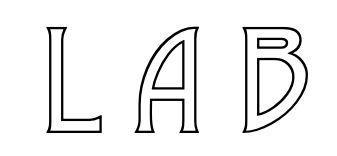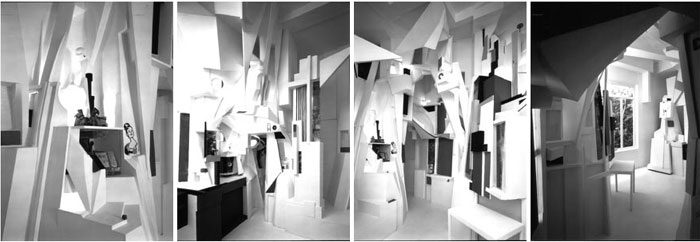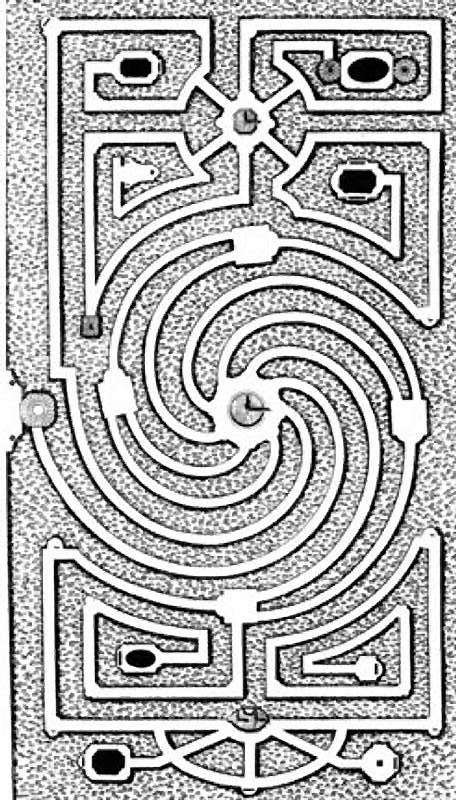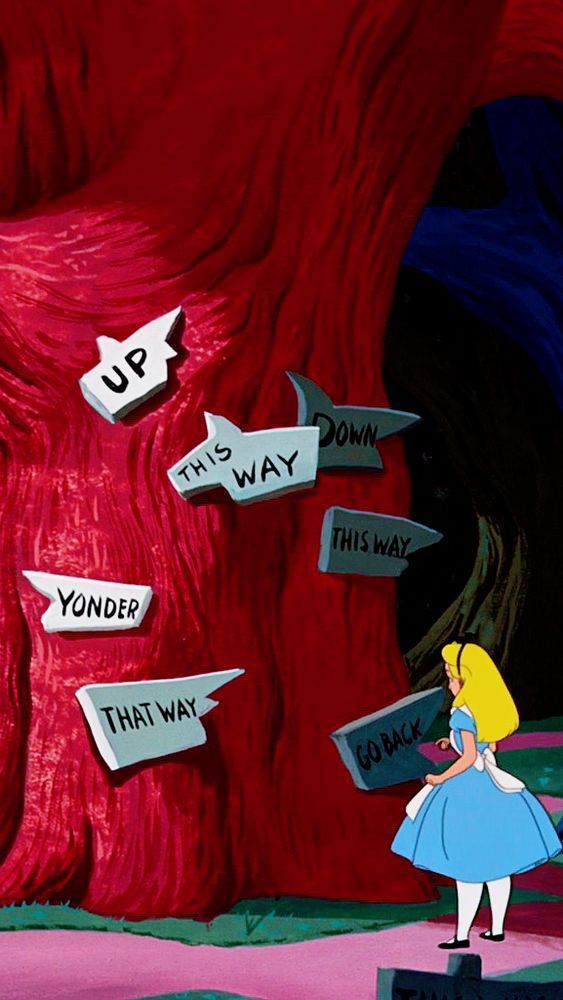this page joins together scholarly and artistic material representative of the entanglement
that constitutes the labyrinthine exhibition framework
a collection of quotations sourced from philosophy, environmental, economic and art theory, architecture and artist writing, photography, video, poetry and original thoughts in form of word games of association as well as visual material
ALDO VAN EYCK (1962)
Space has no room, time not a moment for man. He is excluded. In order to 'include' him — help his homecoming — he must be gathered into their meaning (man is both the subject and object of architecture).
WHATEVER SPACE AND TIME MEAN, PLACE AND OCCASION MEAN MORE.
FOR SPACE IN THE IMAGE OF MAN IS PLACE AND TIME IN THE IMAGE OF MAN IS OCCASION.
Today space and what it should coincide with in order to become 'space' — man at home with himself — are lost. Both search for the same place, but cannot find it.
PROVIDE THAT PLACE.
Is man able to penetrate the materials he organises into hard shape between one man and another, between what is here and what is there, between this and the following moment? Is he able to find the right place for the right occasion? Is he permitted to tarry?
NO. So start with this: make a welcome of each door, and a countenance of each window.
Make of each a place, a bunch of places of each house and each city,
FOR A HOUSE IS A TINY CITY, A CITY A HUGE HOUSE.
Get closer to the centre of human reality and build its counterform — for each man and all men (today the architect is the ally of everyman or no man).
Whoever attempts to solve the riddle of space in the abstract will construct the outline of emptiness and call it space.
Whoever attempts to meet man in the abstract will speak with his echo and call this a dialogue.
MAN STILL BREATHES BOTH IN AND OUT, WHEN IS ARCHITECTURE GOING TO DO THE SAME?
When it does watch the thin lines — those narrow borderlines — loop into the places people need; watch how they are persuaded to loop generously into a tiny-huge.
INBETWEEN REALM
It is with this in mind that I venture to call architecture
BUILT HOMECOMING
Switch on the stars before the fuses go!
"open up the window and let the foul air out"
The breathing image epitomises my conception of twin phenomena. We cannot breathe only one way — either in or either out. As to what Jelly Roll cried: which window and what foul air? The 'window' is relativity and the 'foul air' .... well, it is what exudes from the aggressive halves into which twin phenomena are brutally split by some disease of the mind which, in our particular society, has been devoutly cultivated.
I am concerned with twin phenomena, with unity and diversity; part and whole; small and large; many and few; simplicity and complexity; change and constancy; movement and rest; open and closed; inside and outside — with why they too are ignobly halved and the halves hollowed out, and why they are withheld from opening the windows of the mind. As abstract antonyms the halves are rendered meaningless — hideous. If they are allowed to materialise into house or city cruelty oozes from their hollowness. For in such houses and cities everything is too large and too small; too few and too many; too far and too near; too much and too little the same; too much and too little different. There is no question of right size. What has right size is at once near and far, simple and complex, open and closed. It will, moreover, always be both part and whole and embrace both unity and diversity. No, as conflicting polarities or false alternatives the hollow halves all spread the same evil: loss of identity and its attributes; frustration, isolation and monotony (monotony not merely in the sense of uniformity because as I have already said: if a thing is too much and too little the same, it will also be too much and too little different).
RIGHT SIZE WILL FLOWER AS SOON AS THE MILD GEARS OF RECIPROCITY BEGIN TO MOVE -IN THE CLIMATE OF RELATIVITY; IN THE LANDSCAPE OF ALL TWIN PHENOMENA.
When I say: make a welcome of each door and a countenance of each window; make of each a place and a bunch of places of each house and each city, because man's home-realm is the Inbetween Realm (the realm of architecture sets out to articulate), my intention is to provide the right scope for multimeaning. As soon as the equilibrating impact of the Inbetween Realm (extended so that it coincides with the bunch of places both house and city should be) manifests itself in a comprehensibly articulated configuration, the chances that the terrifying polarities which hitherto have harrassed man's right composure may still be reconciled will certainly be greater.
It is still a question of twin phenomena, a question of providing the inbetween places where they can be encountered, readily mitigating psychic strain.
The motive behind the statement — a house is a tiny city, a city a huge house, is to unmask the falsity which adheres to an array of false polarities. Not merely the small versus the large; many versus few; near versus far; but also part versus whole; unity versus diversity; individual versus collective; simplicity versus complexity; closed versus open and interior versus exterior. It seems to me, moreover, that the statement upsets the fatuous architect — urban-ist hierarchy. It does what I wanted it to do — gladly. The statement creates a climate in which the four isolated terms, tiny — city — huge — house, released from the bondage of their limited definition, can encounter each other liberally. The statement is, of course, ambiguous and consciously so. It's ambiguity is of a kind I should like to see transposed to architecture. It certainly belongs to the Inbetween Realm which — this must be stressed — includes, never excludes, significant meaning. Through identification the statement induces the limited connotations that have fastened on to the idea house and the city to relinquish their hold. The essential sameness of house and city dwells in a different dimension altogether to the one which their alleged differences is miserably cloistered. Both house and city are a bunch of places for people. Does it bring us anywhere to say one is much larger than the other, has more places, more aspects or is more complex? I think it is better to say — look, they are all for the same species, so if they are right — possess right size — they will be as simple and complex as the species they provide for, regardless of whether the bunch is small or large, whether there are few places to a small one and many to a large one, or many places to a small one and few to a large one.
Something may be appreciated as being too small because it is small in the wrong way or not small enough in the right way. There may be too few of them, which-may again imply too small in the wrong way; or there may be too many which, once more, may imply too small in the wrong way. Similarly something can be too large because it is large in the wrong way or not large enough in the right way. It may be too large because there are too few or too many of them in the wrong way — i.e. not enough in the right way! Objects may elude right-size, which includes right number and distance, because they are the same in the wrong way or not different enough in the right way. The difference may be too small or too large (too small or too large in the wrong way). This would mean that there is no significant difference or nothing significantly the same — have no real unity complexity. When one deals with plurality one cannot disregard the singular nor can one deal with the singular and disregard the plural. "Harmony in motion" embraces classical harmony — it does not reject it. (In order that we may overcome the menace of quantity the laws of what I call "harmony in motion" must be discovered — the aesthetics of number).
It is good to discover similarity in different ways and to recognise real differences as variations of the same — as good as it is to experience a similar kind of occasion repeated in different places and different kinds of occasions occurring in the same place.
TREE IS LEAF AND LEAF IS TREE HOUSE IS CITY AND CITY IS HOUSE.
Take my part and there is the whole. Take the whole and behold the part. Whole is part and part is whole (provided each is identified with what it needs in order to be house, city, leaf or tree; moisture, air, sap; people and peoples' activities, emotions, associations.
It is the multiple meaning within the two images that matters in each case.
A tree is a tree because it is also a large leaf.
A leaf is a leaf because it is also a small tree.
A city is a city because it is also a large house.
A house is a house because it is also a small city.
Say, tree, leaf, large leaf, small tree; Say, leaves or leaves on a tree;
Say, a few leaves still or many leaves soon;
Say, leafless tree.
Say, this tree when my child grows up and that tree when I was young.
Say, one tree, lots of trees, all sorts of trees, trees in the forest.
Say, forest (hear: dark, lost, owl's hoot, squirrel, toadstool, tiger, timber).
Say, apple tree, apples, apple pie.
Say, NUTS!
I have spoken of place; of house and city as bunches of places — both; of the Inbetween Realm as man's home-realm.
I have identified the built artifact with those it shelters (the building with that building entered) — and, having done so, found it expedient TO DEFINE SPACE SIMPLY AS THE APPRECIATION OF IT, thus excluding all frozen properties attributed to it academically whilst including that which must never be excluded: man appreciating it. I have called architecture built homecoming.
Now it is with this in mind that I have come to regard architecture, conceived primarily in terms of direct space-expression, chained to the limitations of visibility, as abstract and arbitrary.
By virtue of what memory and anticipation really signify place acquires temporal meaning and occasion spatial meaning. Thus space and time, identified reciprocally (in the image of man) — emerges — humanified — as place and occasion. Architecture must therefore "open" both space and time; "interiorise" them so that they can be "entered" — for space and time are still hideously inaccessible and void (the transparency of time is indeed opening up old mechanical notions!). Architecture must also awaken to the truth that places remembered and anticipated dovetail in time's transparency and that the great network of associations turns consecutive appreciation into simultaneous appreciation — from place to place, from occasion to occasion.
The large house = little city statement (the one that states a house is a tiny city, a city a huge house) can get on very well with these simple forgotten truths. It possesses a kind of clarity that never quite relinquishes the secrets it guards. It is, above all, — this is my final point — a kind neither house nor city can do without. Let me
CALL IT
LABYRINTHIAN CLARITY
Such clarity (ally of ambiguity) softens the edges of time and space and responds to regions beyond visibility (allows spaces to enter each other — occasions to encounter each other).
The Inbetween (home) Realm is never without it.
Right-size goes hand in hand with it. It harbours beautiful qualities; it is kaleidoscopic, has:
Scope for that which is small yet large — large yet small;
near yet far — far yet near;
open yet closed — closed yet open;
outside yet inside — inside yet outside;
and, without scope for the right delay;
the right release;
the right certainty;
the right security;
the right response;
the right surprise;
and always scope for the human child — ourselves.
There is a kind of spatial appreciation that makes us envy birds at flight; there is also a kind that makes us recall the sheltered enclosure of our origin. Architecture will fail if it neglects either one or the other kind (providing for Caliban requires providing for Ariel also). Labyrinthian clarity sings of both.







labyrinthine ≠ labyrinth
labyrinthine = also intangible
labyrinthine: a term not at home in the museum
the latter is limited to the description of a physical space or a (number of possible) path(s) winding through a space
"operates as a descriptor of material, physical entities as well as abstract, immaterial, emotional experiences. As such, labyrinthine is more adaptable to another of the distinguishing traits of these exhibitions: disorientation." (Greenberg, 2018)
the labyrinthine breaks with museum standards: layering > visual clarity
immersion > spectatorship
proximity > distance
chance > rationality
"correspond[s] to the idea that recent history cannot be understood and written by adhering to centralised, stable narratives" (Schavenmaker, 2018)
term used in relation to a real, spatial network such as a city:
“irregular, twisting, maze-like, winding, serpentine, meandering, wandering, rambling, mazy, sinuous, or zigzag.”
1
the labyrinthine as
amorphous system involving "plots and counterplots”
“complicated, intricate, complex, involved, tortuous, convoluted, tangled, elaborate, knotty.”
(Oxford Dictionary)
2
About Place and Occasion, the In-between Realm
and Labyrinthian Clarity
Text about liquidation of exhibtion structures
Every
samayavali
lists and gives
chronologies of events as they happen or
ought to happen in the course of a given
period of time; an
asamayavali
is an un-
chronology.
Asamay
is both untimely and
unlikely time, an unseasonable time. It can
also be a time that we wish not to come
to pass, or a time of desires and dreams,
an imagined time. An
asamayavali
is an
account of a time that is out of sorts; a time
that is exciting and sits uneasily on our
consciousness. It’s the kind of time that
repairs days and nights, cooks the hours,
does a bit of gardening of the minutes. It
needs other devices – other clocks and
calendars – for us to take a measure of its
passage.
An
asamayavali
is, by definition, un-
retrospective. What
Untimely Calendar,
the
exhibition, offers is a working mill of ideas
that face the future and a way of reading
contemporaneity; a polyphony on the
question of ‘how to be with time’ […]
The site of descent is what it’s really all about, isn’t it?
Where and when to dive into the thick of things?
How much pressure to sustain?
How much ballast to offload?
How much, or how little oxygen, to take on board?
The best thing to do is to identify a rift, some place
where tectonic forces are hard at work and play.
Where things are hot and thick and close. Signs of
volatility mean signs of life.
The rift you choose, chooses your questions, throws
them back at you like a submarine eruption. There
is no good time to dive; there is no time that is not
suitable. Tomorrow is not better than today, the past
was not better than the present. The future is as good
as your next dive. Now is as good as ever.
Take a deep breath.
– Raqs Media Collective
Kurt Schwitter's Merzbau (1923-1937)
Architectural drawing by Larisa Bulibasa
labyrinthine artery (medical term)
"working with time as if it were a labyrinth"
- Raqs Media Collective
3
Installation shot "Conversation Pieces" (2014), Milan
– Johan N. Prinsloo (2015)
}
exhibition as labyrinthine beyond the blueprint, the physical layout
an exercise of layering
- Authorship: The authors co-creating; interweaving works of curator, artist, researcher, architect, etc.; merging authorship in favour of collective/collaborative methodologies employing flat hierarchies
- Artwork: what is the artwork? What is the backdrop? How does the idea of Gesamtkunstwerk play into this? The entire exhibition becomes one labyrinth, individual artworks are part of a bigger whole. They melt into their environment but also connect with one another. where does a single artwork start and where does it end?
- Scenography: The flow prescribed by the architectural layout, the spatial dramaturgy, and visual clues and suggestions can build a (literal) labyrinth. How is the audience guided through the exhibition and experiences it visually, spatially and temporally?
- Context: The space/time context of many exhibitions introduces a temporal dimension. Many labyrinthine exhibitions are retrospectives or play with the juxtaposition of new commissions and older pieces, sometimes even historical/canonical works. What is contemporaneity? What is the moment of now? An exhibition can invite to connect different moments of 'now' - past, present, and future, and forge new connections.
- Prospects: The exiting and the exploratory potential of exhibitions. Navigating possibilities, mapping creatively, expanding horizons. How can labyrinthine exhibitions be developed further? What are the creative, critical potentialities?
Video still from "A Curator's Last Will and Testament" (2009) by Nick Waterlow
Liquifying order
structure
boundaries
solids
linearity
truth